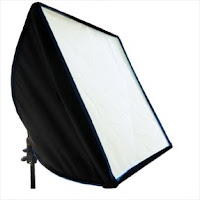There are two main types of lighting within photography, natural and artificial, both of which have certain characteristics that will greatly affect the quality of our photographs. These characteristics are intensity, quality, direction, contrast, colour and unevenness.


The intensity of the light is the quality or brightness of the light shining onto the subject. The quality of the light is seen by the type of shadows formed / cast on and around the subject.
Hard Shadow - sharp direct light source, i.e. the un-obscured sun or snoot

Soft Shadow - large source of light usually from above, i.e. the cloudy sky or a soft box

As a photographer I must measure the intensity of the light to determine the lighting ratio of the scene. The lighting ratio is the difference in intensity between the areas that receive the most light and the area that receives the least.
If a studio is lit with the use of bright lights then the ratio should be high where as if a studio is lit with dim lights then the ratio should be lower.
The lighting ratio affects the degree of contrast within a photograph; a high ratio should produce sharp images with strong contrasting light and dark tones where a low ratio should create softer images with a wider range of medium tones.
Looking in more detail into the differences in lighting ratio's within a studio environment I found this site to be very informative http://www.professionalphotography101.com/portrait_lighting/light_ratios.html
(TIP If taking colour photographs a high lighting ratio may make some colours appear either faint or excessively dark therefore it is best not to overpower the subject with light if a high quality and trueness of the colour is to be seen in the final image)
The colour of light can also vary according to its source although the human eye can't always detect this as the variations appear invisible to us. Ordinary light bulbs produce a reddish light and fluorescent light is basically blue-green. Variations in the colour of light produce a wide variety of effects in colour pictures, we can control these effects by using colour filters on the camera lens or using different colour settings on a DSLR, or colour film that is designed for different types of indoor lighting if using a SLR (film) camera.
No comments:
Post a Comment